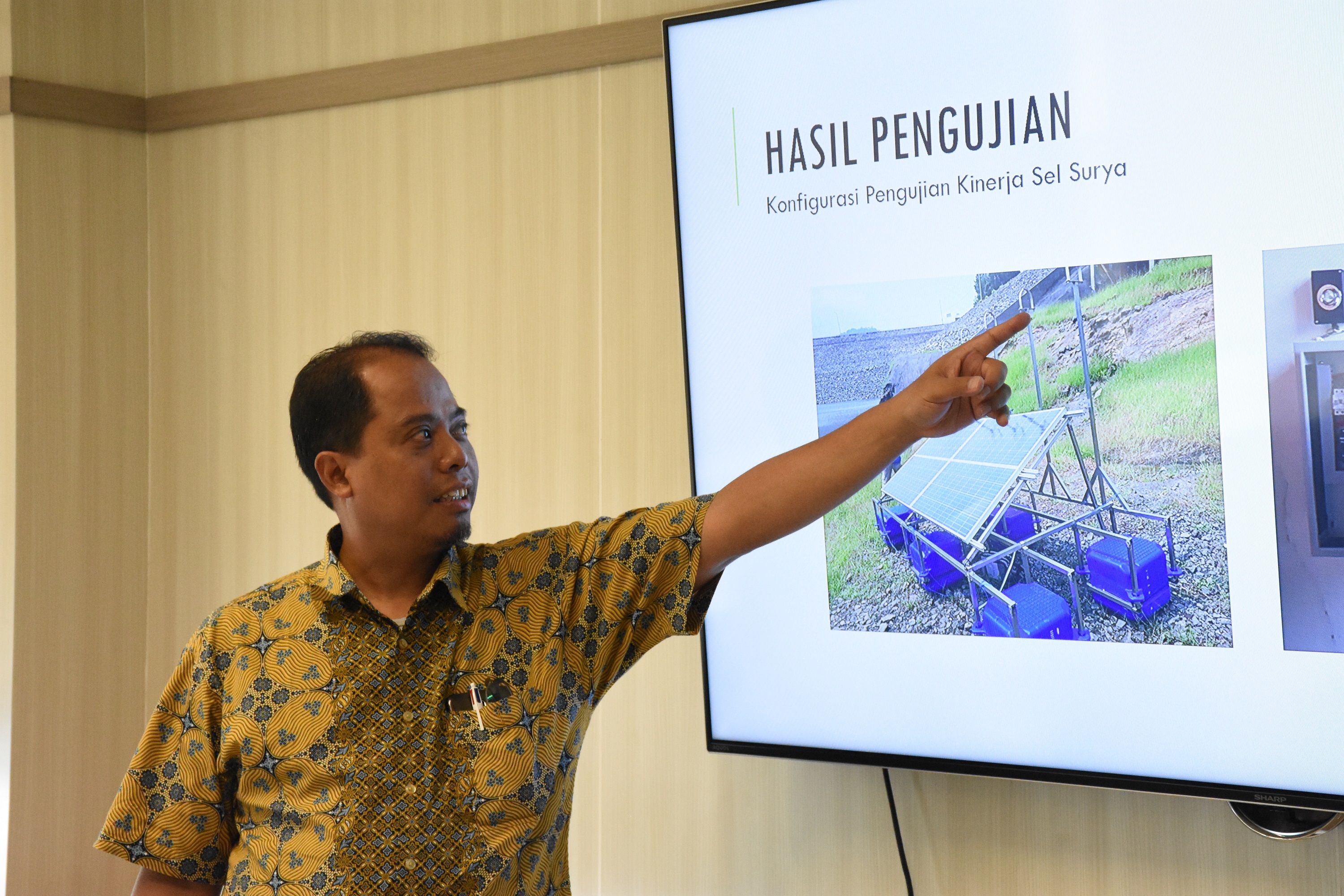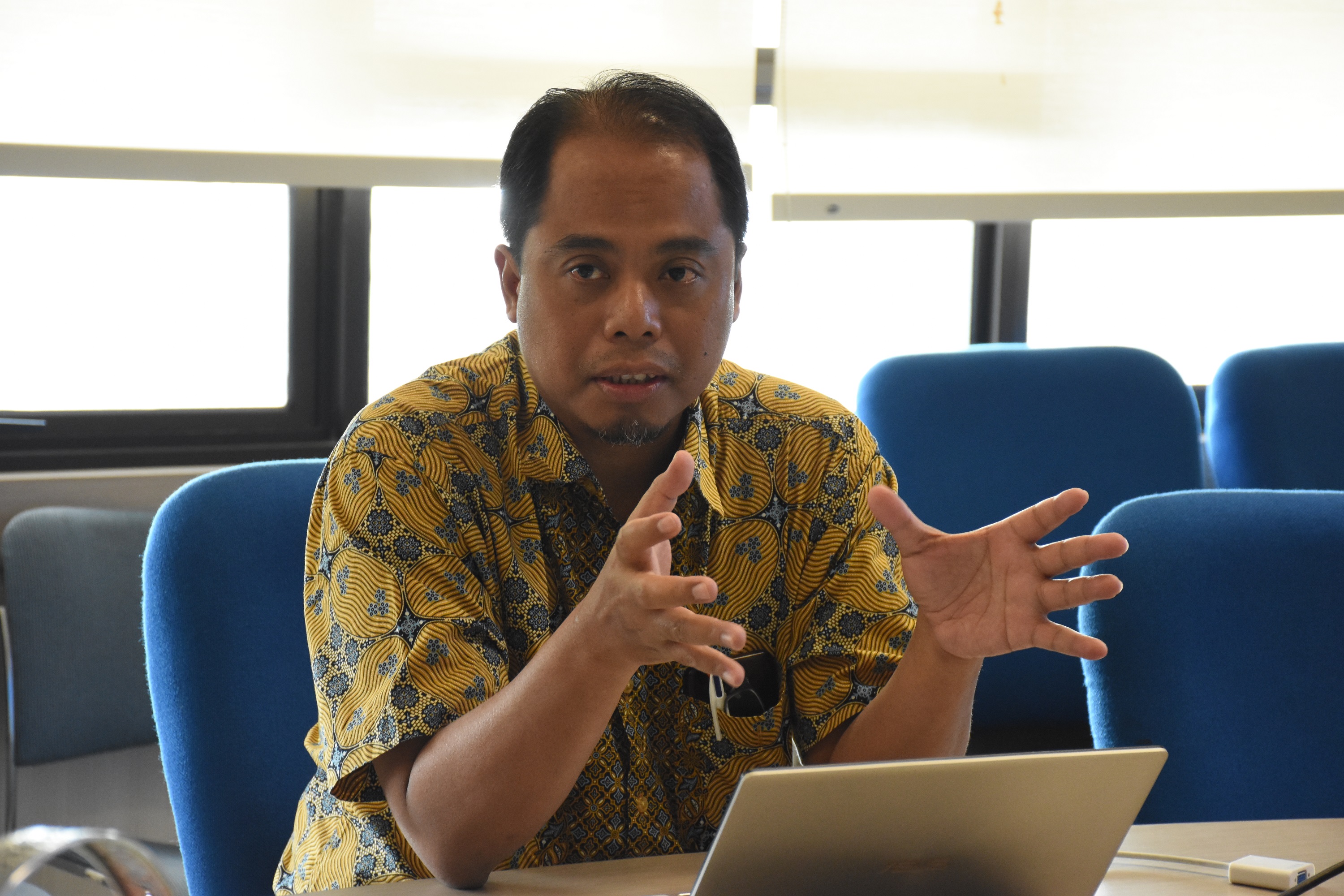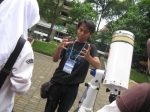An Innovation to Enhance Solar Panel Efficiency from ITB Lecturer
 *Dr. Yuli Setyo Indartono explaining his innovation
*Dr. Yuli Setyo Indartono explaining his innovation
*Dr. Yuli Setyo Indartono explaining his innovation
BANDUNG, itb.ac.id – Turning sunlight into electrical power using solar panels has been a frequent application. Commonly, we can see the panel on rooftops of buildings or houses. But solar panel is also suitable for application on water surface such as on a lake or water reservoir, and this way has efficiency advantages because it increases power generated from the solar panel.
This innovation is developed by Dr. Yuli Setyo Indartono with his research on floating photovoltaic cooling system with thermosiphon. “Not all sunlight radiation that reach the surface of solar panel turn into electric power. The maximum wavelength of light utilizable by silicon-based solar panel is 1,150 nanometer. If the wavelength exceeds that number, light will be converted into heat on the solar panel and will reduce its ability to generate electrical power,” said Dr. Yuli.
Dr. Yuli, who is also a lecturer of mechanical engineering in Faculty of Mechanical and Aerospace Engineering of Institut Teknologi Bandung, develops a breakthrough by adding thermosiphon effect to solar panel to enhance its efficiency. “On common floating solar panel, temperature on panel’s surface is cooled by radiation toward water surface and from contact of water vapor at the bottom of solar panel, while with thermosiphon, we make the cooling system better because there is cooling water circulation,” he explained.
Thermosiphon is a water flow (like a water cycle) that happens because of differences in density. The differences happen due to differences in temperature. Water within aluminum channel at the bottom of panel has higher temperature, which will move up until it reaches the reservoir at the top. The warm water movement triggers the whole movement within thermosiphon system. According to Dr. Yuli, this will create a water cycle that cools down solar panel in the system and will increase the amount of electrical power.
*Dr. Yuli Setyo Indartono
On the initial phase, the design underwent simulation using ANSYS FLUENT software to evaluate thermosiphon flow that happens in solar panel cooling system. The result of simulation indicates the occurrence of thermosiphon flow within cooling system. Afterward, model scale of thermosiphon cooling system on solar panel is developed and tested on the rooftop of Research and Innovation Building of ITB. That phase, Dr. Yuli said, displayed the success of the cooling system to reduce solar panel temperature compared to solar panel without thermosiphon cooling system.
By comparing the power generated between floating solar panel with thermosiphon, floating solar panel without thermosiphon, and land-based solar panel, it is obtained that for 50 Wp solar panel with 1,000 W/m2 irradiance, floating solar panel with thermosiphon generates 47 Watt, floating solar panel without thermosiphon generates 41 Watt, and land-based solar panel generates 40 Watt. From those results, floating solar panel with thermosiphon generates more electrical power than other solar panels.
On the later phase, the system will be applied on a bigger scale at PLTA Saguling in West Bandung Regency. The process still undergoes tests and it shows positive initial result. Compared to land-based solar panel, floating solar panel with thermosiphon increases the power by 4.35%, better than floating solar panel without thermosiphon which increases by only 1.90%.
The research meets with several obstacles during installation process. One of them is leak occurrences on the connection between hose and aluminum pipe. Several components also need to be made due to unavailability in the market.
Dr. Yuli Setyo Indartono hopes the testing phase will be a success and the system could be applied all over Indonesia. This research, which began in 2016 and is currently applying for patent, is expected to be a solution to electrical energy shortage in Indonesia.
Reporter: Irfan Ibrahim (Geodesy and Geomatics Engineering 2016)

scan for download







